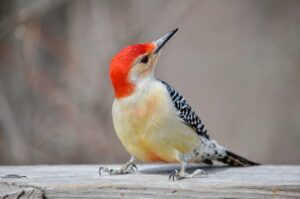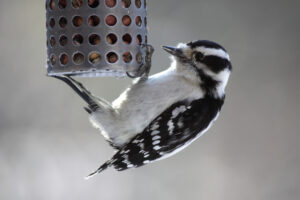This Is Why Woodpeckers Peck…
Are you ever curious as to why woodpeckers peck? Are they just being annoying? Or is there a deeper reason behind it? Well, we’re here to answer all your questions and tell you all there is to know about these enigmatic birds. Read on to find out why woodpeckers peck...

The Pecking Noise
Woodpeckers peck at tree trunks and branches using their specialized beaks in search of food, nest-building materials, and even a place to sleep. Their distinctive pecking can also be used as a form of communication between birds or even to announce their presence to the world. Understanding why woodpeckers peck can help us better appreciate these fascinating creatures and the complex lives they lead.
There are many reasons why woodpeckers peck, each of which has unique implications for the bird’s behavior and habitat selection.
To some extent, it depends on the species — some woodpeckers specialize in eating certain foods or constructing certain types of nests, while others just need an area free from predators where they can rest during the day. In general, however, woodpecker pecking falls into three main categories: foraging for food sources; searching for nesting material; and tapping against trees as a form of communication or territorial marking.

Woodpecker Anatomy
Woodpeckers have evolved features that have specifically adapted them to their way of life. They have long chiseled beaks filled with spiked barbs that allow them to drill deep into wood in order to find food such as insects and insect larvae. The base of the beak is held tightly against the wood, and when the woodpecker pulls back, it's equipped with a pantry of grubs, while chips of wood fly out in all directions.
The short neck of many species helps the bird gain extra power for drilling, and cushioning at the base of its skull absorbs a lot of the shock from pecking. Woodpeckers also have long zygodactyl toes which feature stiffer outer toes and more flexible middle toes for foraging in crannies. Finally, their tail feathers act as a prop, anchoring them against tree trunks while they hammer away at their lunchtime meal.

What Is Pecking?
Pecking is the primary means used by woodpeckers to obtain food, excavate cavities for nesting and roosting, and communicate. It is a repetitive behavior in which a bird rhythmically uses its bill to strike a hard surface. The physical process of pecking creates vibrations which can be sensed by other birds or even animals of different species.
The shape of the bill and hardness of the bird’s tongue make pecker birds the ideal tools for drumming against trees and other substances such as metal or brick walls. Pecking allows the bird to search for food within crevices that may not otherwise be accessible if it had no ability to tap at them repeatedly with power. The birds are also able to gouge holes in tree bark where they can catch bugs under their tongues or extract sap from sap pockets—a valuable source of energy during migration season.
Moreover, woodpeckers use pecking behavior not just to obtain food, but also as a method of communication between individuals within a species, particularly when establishing territories during breeding season. Pecking is used alongside posturing displays and “drumming” (a form of singing) in order to attract mates and agree upon locations for nesting activities. Further, woodpeckers are adept at sound localization: they can distinguish where various knocks originate from in order seek out predators or potential mates through knocking on dead trees or rocks near them - as well ass capnvhing an upcoming displacement before it ever reaches them!

A Unique Bird: Woodpeckers
In conclusion, woodpeckers have many unique adaptations which help them to survive in their habitats. They have specialized bills for pecking and thick skulls that protect their brains from shock when drilling into trees.
Strong neck muscles allow them to pull off challenging maneuvers without injuring themselves. Finally, their tongues are long and sticky, enabling them to access insects deep within crevices in the trees.
Together, all of these adaptations make it possible for woodpeckers to peck effectively and safely in order to gather food and create nesting cavities.
